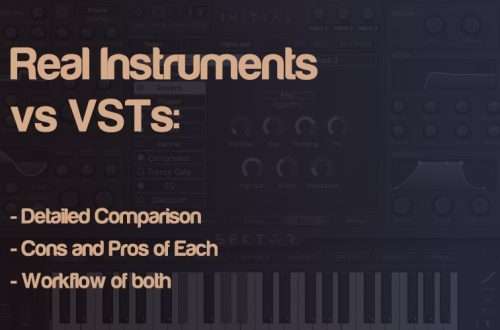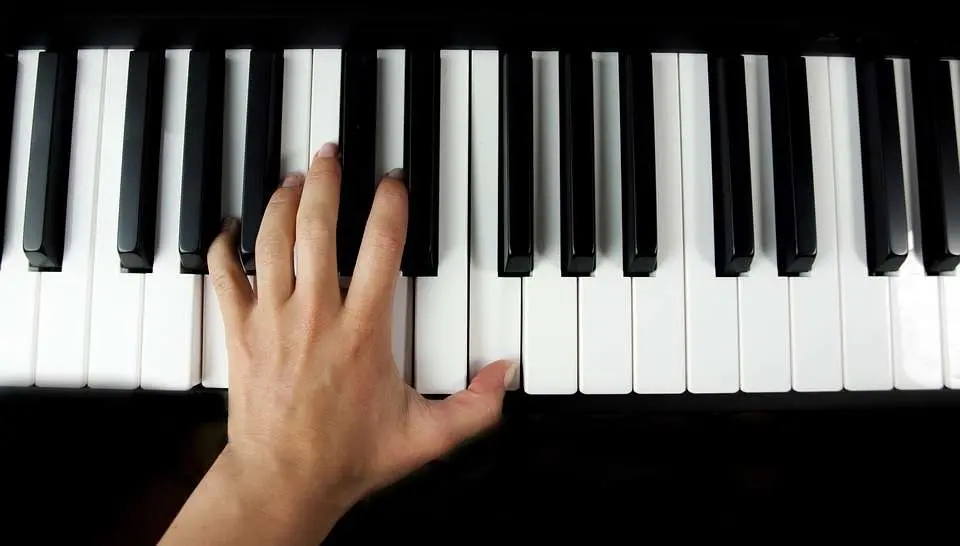
Chords, or the world open?

Chords – when beginning musicians hear about chords, a wide smile appears on their faces most often, and in their minds the longed-for “finally!” 🙂 They think that as soon as they learn a few chords, it will automatically introduce them to the world of great musicians and no song will be a problem for them anymore. In reality, however, it looks completely different, in fact, the more we know, the more broadly we see… how much more to learn and how much work is required to develop one’s skills!
So what about books, according to which we can play almost all cult rock songs with just a few chords? What about songbooks with dozens of famous hits and most of them really have 3-4 chords? Well, it all depends on what we learn to play for. Some people want to become professional musicians who will not be afraid of any musical style, others just want to create their own music, and the whole history, music theory is indifferent to them, others simply dream of playing a few Christmas carols for their family at the Christmas tree. Obviously this is a very vague approach, but I think most of us would fall into any of these 3 groups.
Regardless of where you would assign yourself, the chords will be useful and even indispensable on any path. So let’s start by explaining what chords are. Chords they are harmonic or melodic chords of several sounds which arrange melodies for us, showing it in the light of gravity and tensions. The simplest division of chords is:
– major,
– mollowe.
Major chords differ from minor chords in that they sound cheerful, while minor chords introduce a rather sad, melancholic mood. How is it that one and the other sound completely different? How do you create both of these chords? The answer will be very simple, but first we need to learn a few new concepts 🙂
To understand chord structure, we must first know the word interval. An interval is nothing more than the distance between two sounds.
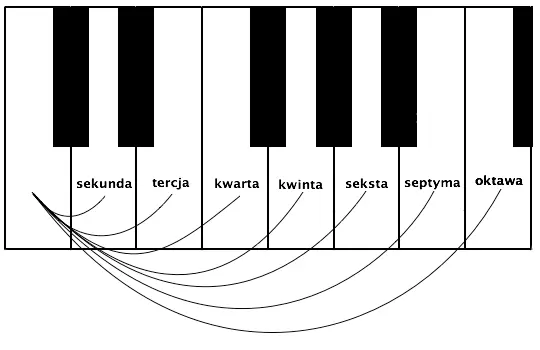
These are simple intervals, their names come from eight scale steps (you learned about the scale in the previous article on scale structure). In the context of the theme of chords, we are most interested in the interval third.
The third has its two varieties, huge i little, this is where the major and minor chords are built. A major third is the distance of 4 semitones, eg from the sound “c” up – we get the sound “e”, “f” – “a”, “fis” – “ais”.
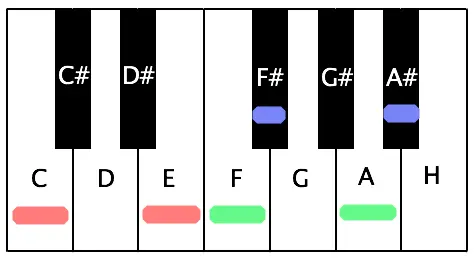
A minor third is 3 semitones, for example C-es, f-as, f-a.
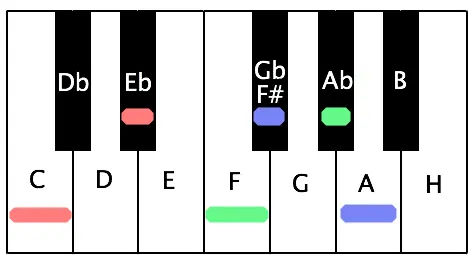
To build chords, we still need information on how to arrange these thirds so that we get the desired chord. Let’s build the most popular chord layout – triad. A major triad is made up of two thirds – first a major, then a minor. Build it yourself according to the instructions 🙂
Instructions for building a major triad:
- We choose the sound from which we want to build the triad – any one, it will be our base sound.
- We build from this sound a major third, so we’re counting 4 semitones up (NOTE! Remember, a semitone is a distance, so we’re counting “1-2-3-4” not from the base note, but from the next one.
- The resulting sound is 2/3 of the entire task 🙂
- Then, from the received sound, we build a minor third, that is, we count 3 semitones up, remembering again that “one” in counting is the first step, not the first note from which we count.
If you have completed the task according to the instructions, you have just built a major triad chord, congratulations!
The instruction for building a minor triad differs from a major triad only in the order of the third, which must be simply reversed, i.e. first we build a minor third, next a major third.
Example:
C major triad, notes c – e – g
C minor triad, notes c – e – g
As you can see, in both chords, the two notes are the same – cig, the difference is only in the middle note – e / es.
We will build two more chords for training. Base sound Es.
Triad in E flat major, notes in e – g – b
C minor triad, notes in E flat – ges – b

Now, based on the instructions, you can build any major and minor triads you can think of, so you can start learning to play the accompaniment to your favorite songs!




